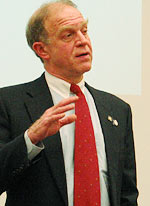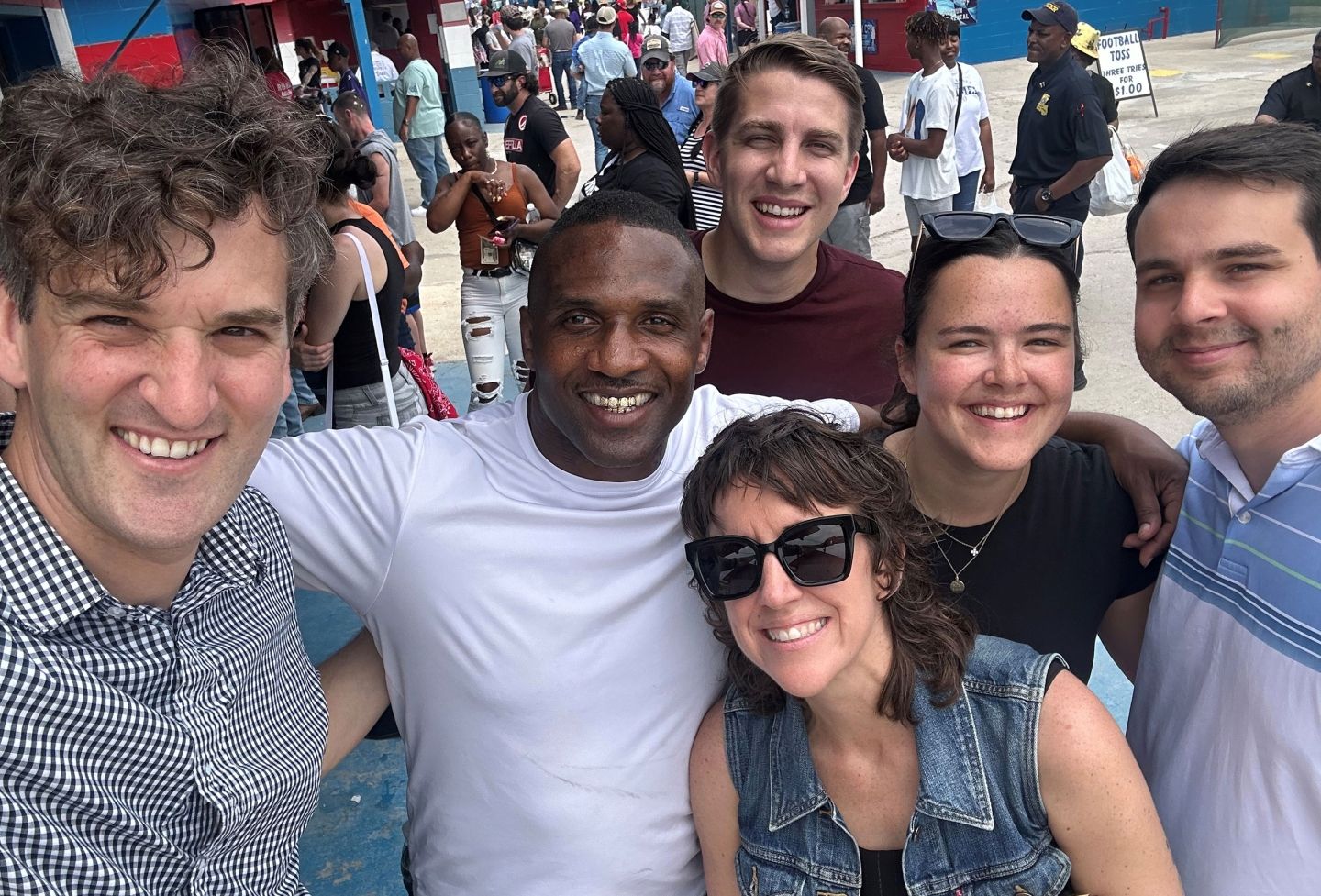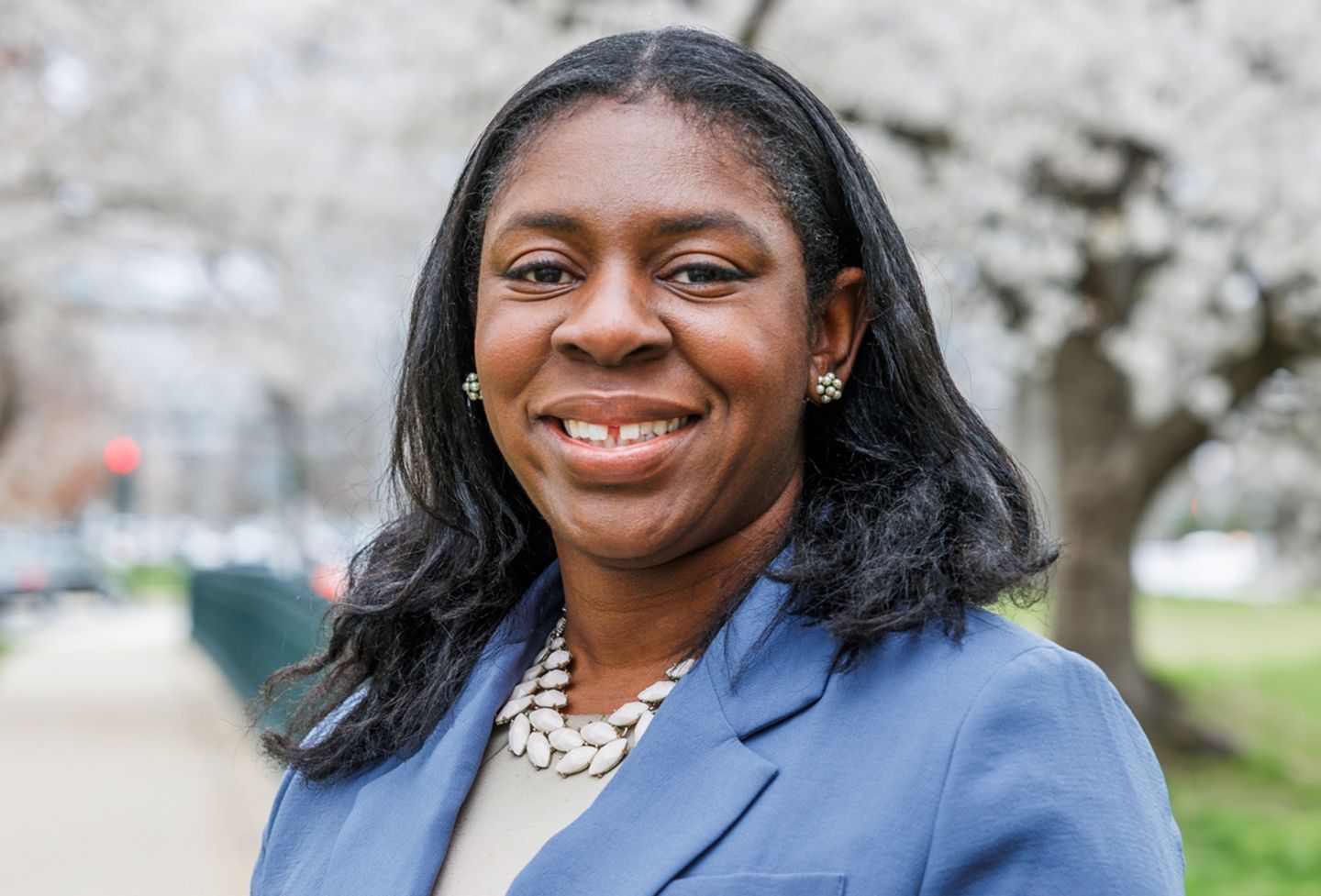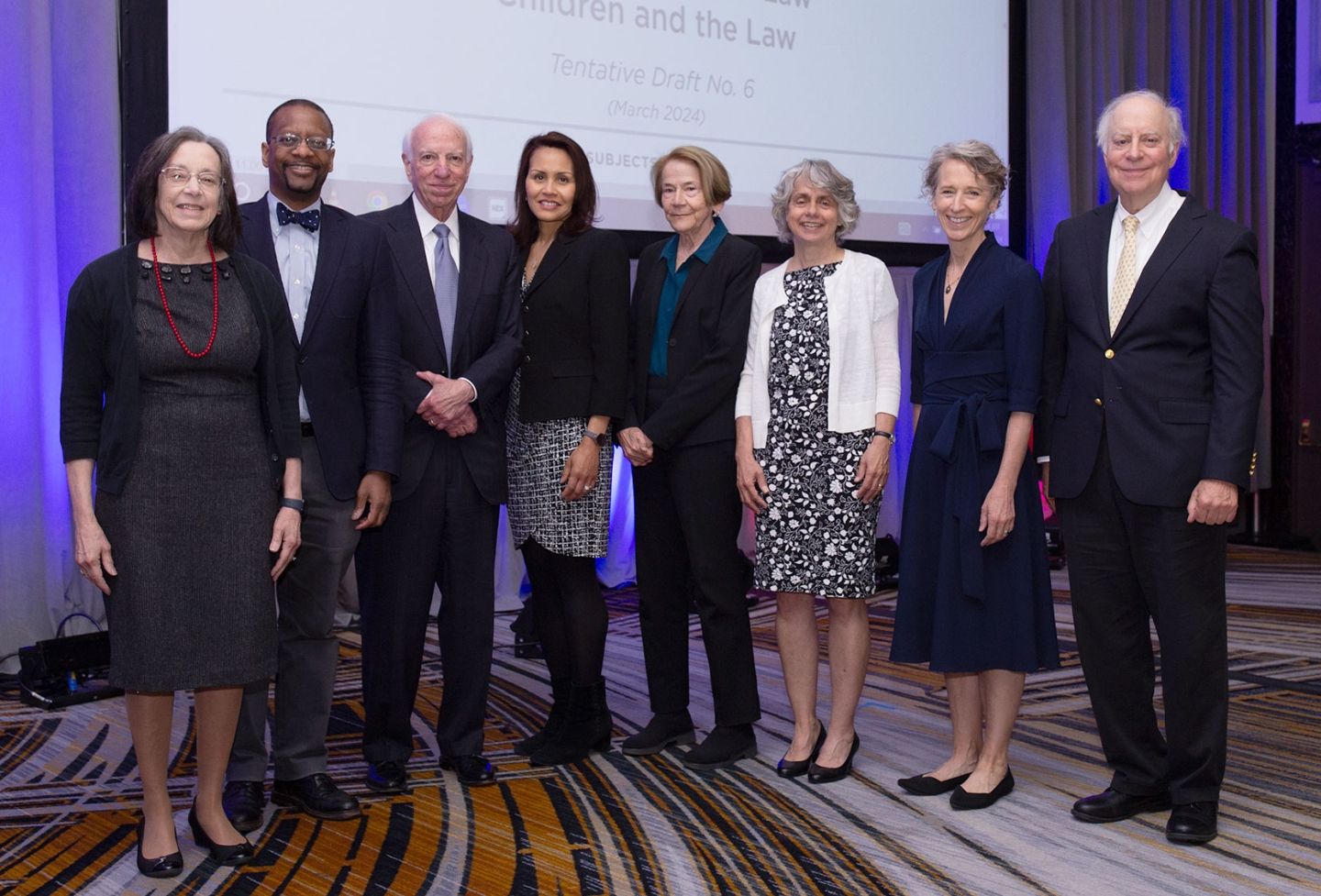Medicare Bill Has Gaps, Surprises, Massaro Says

Although the Medicare bill was designed to address the lack of prescription medicine coverage for the elderly in the face of rising drug costs, the bill made its way through the political shuffle, resulting in gaps in coverage and the first signs that the government will expect wealthier Americans to foot their share of the bill, said Dr. Thomas Massaro, Chief of Staff of the University of Virginia Health System. Massaro described the ins and outs of the bill Jan. 22, inaugurating a monthly lecture series sponsored by the U.Va. Forum on Health Law and Policy.
"The devil is in the details," Massaro said, noting that the bill could be a potential regulatory and financial nightmare. "It's an omnibus bill in many ways… In most people's minds, it increases health inflation."
Massaro said the law, if enacted as it was signed into law in December 2003, will be "one of the most far-reaching" changes to Medicare, the largest federal program. The bill will bring private practice alternatives into the Medicare environment, with voluntary prescription drug benefits delivered through a private insurer beginning in 2006. Until then, Medicare patients may use drug discount cards that provide relief of 10-15 percent. Conservatives promoted the plan, Massaro said, but it was also endorsed by the AARP. American nurses' associations, who tend to be patient advocates and wanted equal coverage for all Medicare patients, and other social groups such as unions opposed the plan.
The primary complaint about the plan has been called the "hole in the doughnut." Massaro said crafters of the bill decided to limit the cost to $400 billion over a 10-year period; in cutting the expense of the plan, lawmakers allowed gaps that could affect the majority of benefits users. Every Medicare patient will have a $250 initial deductible; up to $2,250, patients will have a 25-percent co-pay, and beyond $5,100 there's a 5 percent co-pay — "which means if you're a heavy user, this is a great deal for you." But many users fall between the $2,250 and $5,100 cost of drugs per year, and "there's no coverage in there."
Massaro noted that Bush vowed to veto any attempt to change the legislation, but "there will be, potentially, a backlash" when people discover the gap. But to fill the "hole" would cost at least another $250 billion, and "where would this additional $250 billion come from?
"If this alone had been the bill, the bill would have had trouble getting through," he said
Massaro said there was a sense from lawmakers that private competition — not unbridled competition — will be more cost-effective and efficient in health care. He noted that Australia chose to subsidize private insurance premiums recently in order to keep them competitive with government programs. By 2010, the bill calls for at least two alternative private plans to compete with Medicare. "If they put real policy meat on the bones [of the bill], this will really impact Medicare in the long run," he said.
In what could signal a major policy shift for social security programs, the bill calls for Medicare to phase in over five years a means test that would determine how much patients pay under Medicare Part B's non-hospital coverage, beginning in 2007. Single patients with incomes of less than $80,000 per year and married couples who make less than $100,000 per year will retain their 25 percent co-pay for doctors' fees. After that, a sliding scale determines patient co-pays, so that top earners — those with incomes greater than $200,000 per year — will have an 80 percent co-pay. Lawmakers had previously attempted to install such a system during the Reagan administration, but "I thought it had been buried historically," Massaro said. He described the change as "part of the political sausage" in order to get the bill passed with the $400 billion cap. A "significant number" of Americans will have a 25 percent or more co-pay under this system by the time it's enacted, Massaro predicted, especially if the stock market makes a comeback. He added, "2010 is two elections away, so again there will be lots of jockeying around all these issues."
The bill also offered some "clear and overt sweeteners" to get doctors to sign on, including increased payments to doctors who bill Medicare. The legislation also pays attention to rural medicine initiatives that many doctors support, and increases funds paid to such hospitals for the expense of having more Medicare patients. The bill also raises the cap on the number of residents allowed at rural hospitals, which has been capped at all hospitals since 1997. The 1997 budget agreement was going to reduce the amount paid to hospitals for training residents but the bill gives some of this money back. Massaro credits this change in part to the projected physician shortage by 2020, but said the measure will not solve the problem.
The bill includes some preventative medicine measures, such as a free initial medical exam, free screening for diabetes and cardiovascular diseases, and increased payments to doctors administering mammograms.
The bill also agreed to fund hospitals for the full medical inflation rate, if the hospital participates in a quality database that collects information on the treatment of Medicare patients; the initial plan requires tracking of patients with cardiovascular diseases, community-acquired pneumonia, and myocardial infarctions. Massaro said Medicare patients account for about a third of the Medical Center 's business. Thus the effective increase of .4 percent "is a real number." He called the move "a very big policy signal … This actually means more to us than the drug law today."
The bill also put the brakes on new "boutique hospitals"; found usually in urban areas, such centers focus on profitable subsets of medicine like cardiovascular disease or orthopedic surgery. Massaro called the move, which puts a moratorium on assigning such hospitals a Medicare provider number, another surprise in a bill supposedly focused on drug benefits.
In the area of drug patents, the bill limits the number of exceptions that a patent-holder can make to the introduction of a generic substitute. Previously a carefully crafted plan could delay a generic alternative for years, but the bill allows proprietary drug companies only one 30-month delay before a generic competitor can be introduced.
One of the most surprising elements of the bill affects private medical oncologists — people who treat cancers non-surgically and without radiation, usually through chemotherapy. Massaro said that today much of the oncologists' revenues are made from the reimbursement of drug delivery, because payments to doctors were based on the average wholesale price of such medicine when doctors were buying the drugs for less. The reimbursement was "apparently perceived to be disproportionate in the policy world," Massaro said. Now private oncology centers are hurting in the stock market because of the change.
Massaro said a major problem of the bill is that it prohibits the government from establishing protocols to enforce cost-effective use of generic drugs. He cited the over-prescription of Vioxx and Celebrex as examples; both drugs are in the non-steroidal anti inflammatory drugs (NSAIDs) family. The FDA has approved them for a very limited treatment profile. However, the drugs "have become almost universal," prescribed for any type of pain relief. They cost in excess of $2 per tab while the generic ibuprofen is as effective for simple pains and costs two cents per tab at a discount drug outlet.
Massaro said that some parts of the bill, such as the initiatives that support telemedicine, are extremely important and are relatively complex to manage. These items might have been better served as separate legislation more carefully crafted by policy and medical experts. But at the same time it might have been more difficult for them to get passed as separate bills. There is always a balance in the politics of health care, he added. "They had to get something for this year, from the election perspective," Massaro said. "We'll see how it all plays out. This is going to be fun to watch."
Founded in 1819, the University of Virginia School of Law is the second-oldest continuously operating law school in the nation. Consistently ranked among the top law schools, Virginia is a world-renowned training ground for distinguished lawyers and public servants, instilling in them a commitment to leadership, integrity and community service.


